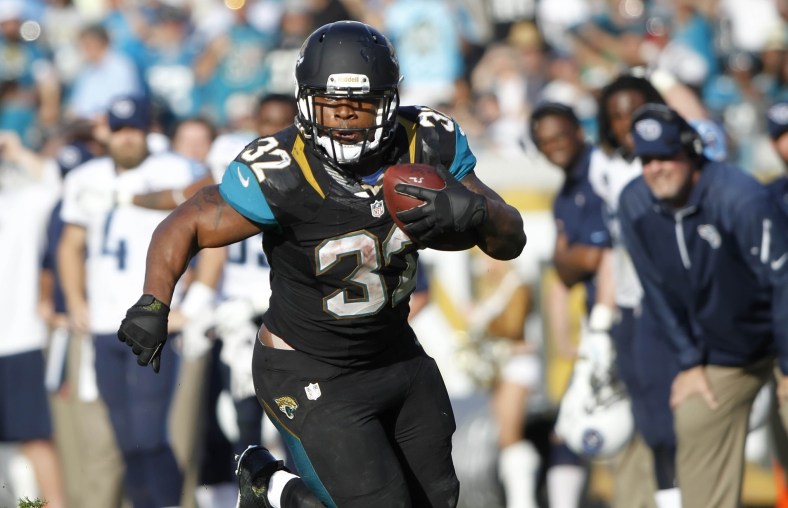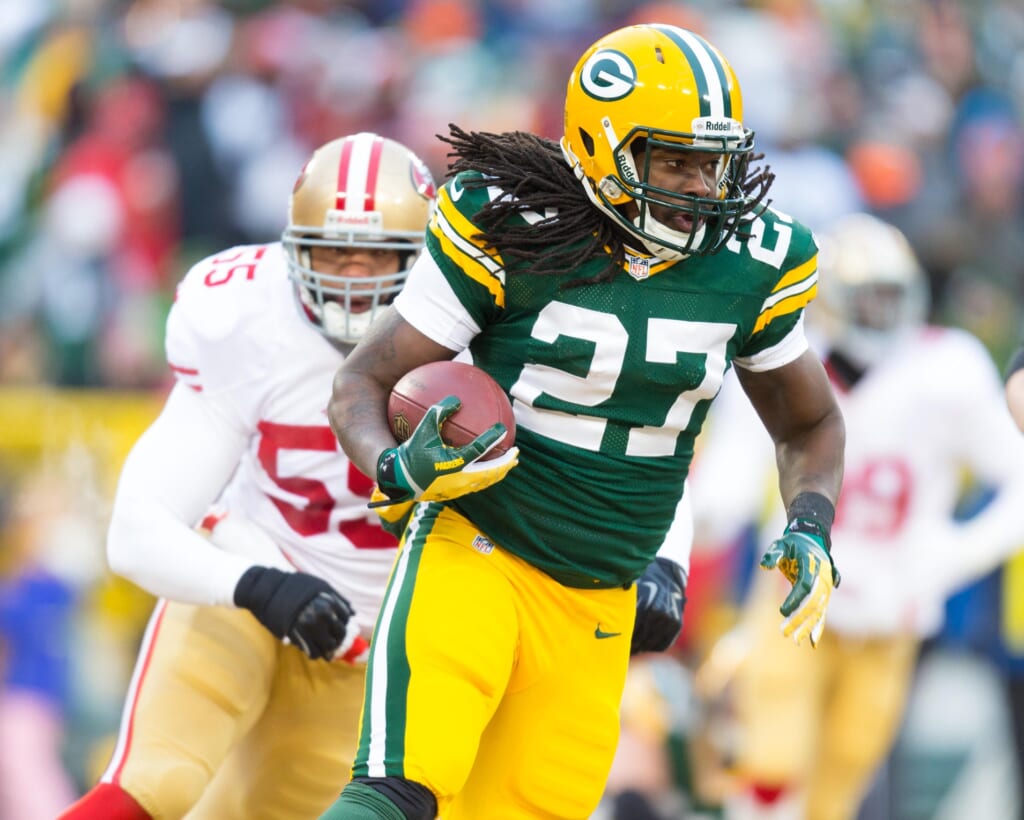
The term “a dime a dozen” is often overused, but it makes a ton of sense in this reference. The NFL has gone away from the traditional bell cow running back to more of a committee approach. This started to take hold as the league progressed to more pass-first offenses. Unfortunately, it appears that some running backs who began their careers when the position was more important might be seeing the negative effects of this.
Maurice Jones-Drew is one player that comes to mind and he might now be pricing himself out of the league.
Maurice Jones Drew currently seeking about $3.5M/year. His career accomplishments are great but as older RB in this market could be tough
— Jason La Canfora (@JasonLaCanfora) March 20, 2014
The former UCLA standout was among the best running backs in the NFL from a three-year stretch between 2009-2011. He tallied nearly 5,500 total yards and 34 touchdowns during that span. Jones-Drew was also in the prime of his career, between the ages of 24 and 26. As you already know, running backs in the NFL have a short shelf life.
The Jacksonville Jaguars running back is coming off his worst single-season performance in 2013. He put up 803 rushing yards and a career-low 3.4 yards per attempt. He’s also going to be turning 29 years old this upcoming Sunday. That’s about the point where running backs hit the proverbial brick wall.
Short in stature (5’8″) and with a ton of tread on those tires, Jones-Drew has found a ridiculously soft market since the start of free agency earlier this March.
Maurice Jones-Drew’s visit with #Steelers ended. No contract. Still no backup RB. Next?
— Ed Bouchette (@EdBouchette) March 20, 2014
The Steelers seem like a decent fit, but he would be nothing more than a change-of-pace running back with Le’Veon Bell in the mix in Pittsburgh. Outside of that, the market has been somewhat bare.
Could it be that Jones’ asking price of $3.5 million is just too out of whack with what teams are willing to spend on the open market? After all, Ben Tate agreed to a deal with that exact annual average and he’s three years younger than Jones-Drew.
The average annual salary that Jones-Drew seems to be demanding would put him right in the ballpark of Donald Brown, Darren Sproles and Toby Gerhart…all of whom signed new deals this offseason (via Spotrac.com).
The issue here, however, is that two of those running backs were overpaid on the free-agent market and Sproles brings much more to the table as a receiving threat than Jones-Drew. In addition, their contracts are structured with guarantees that indicates they’re not going to make $3.5 million per when all is said and done. It remains to be seen if Jones-Drew is willing to do that.
Another factor to look at here is team’ needs. Who is in the market for a starting running back who will be turning 30 in about a year and is demanding just $1.1 million less per season that Jamaal Charles is earning in 2014? Just think about that for a second.

Jeff Hanisch, USA Today: Jones-Drew price is too high as a free agent. Look at Lacy’s 2013 production.
Yet another factor to look at is the draft, where running backs have seen their values go down a great deal. Eddie Lacy, a second-round pick last April, took home NFL Offensive Rookie of the Year honors. He’s set to earn less than $800 thousand next year.
With the likes of Bishop Sankey, Tre Mason and Carlos Hyde, among others likely available on Day 2 of the draft this upcoming May, it makes more sense for teams to go that route than exhaust a decent salary on a veteran running back who is clearly past his prime.
In order for Jones-Drew to get more play on the open market, he’s going to have to be a tad more realistic here. This means lowering his asking price to closer to $2 million per season. If that happens, multiple teams will come calling. Until then, the market promises to be relatively weak for his services.
Then again, Pittsburgh could easily make this article irrelevant by signing Jones-Drew at his price tag in the next 20 minutes.
Photo: Kim Klement, USA Today